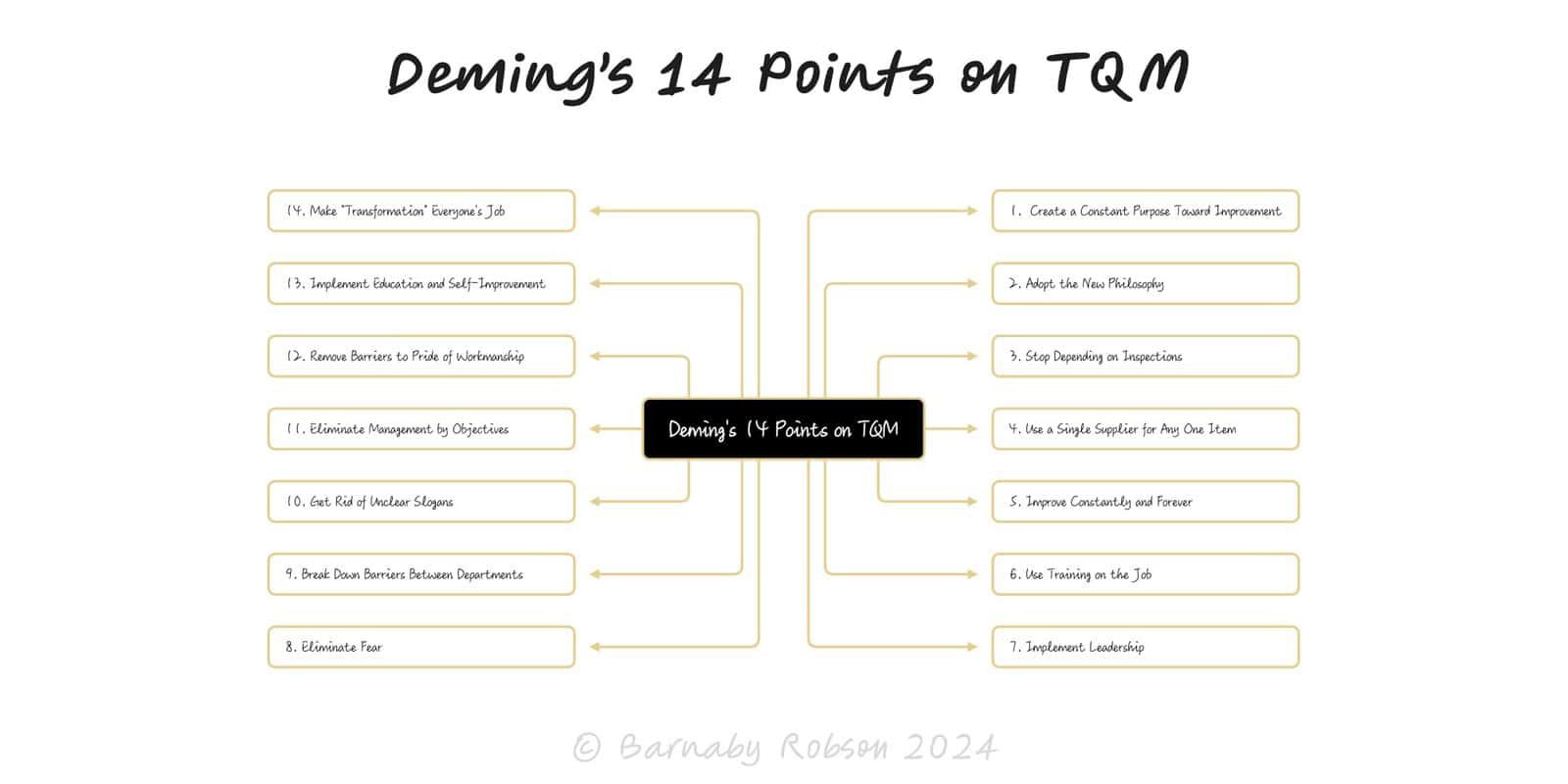Deming’s 14 points
W. Edwards Deming

Shaped by Deming’s work with Shewhart and post-war Japan, codified in Out of the Crisis. Core ideas: manage the system, control variation (common vs special causes), and improve continuously via PDCA.
1. Constancy of purpose – commit to long-term customer value, not quarter-to-quarter fixes.
2. Adopt the new philosophy – quality as a management duty, not inspection’s job.
3. Cease dependence on inspection – build quality in; prevent rather than sort.
4. End price-tag purchasing – choose suppliers on total cost and partnership.
5. Improve constantly and forever – continual process and system improvement.
6. Institute training – on-the-job capability building and standard work.
7. Institute leadership – managers remove obstacles and coach.
8. Drive out fear – enable candour and problem signalling.
9. Break down silos – optimise across functions, not within.
10. Eliminate slogans and exhortations – fix systems, not attitudes.
11. Eliminate numerical quotas and targets – manage by process and capability.
12. Remove pride-of-workmanship barriers – fix faulty measures, rework loops, and rating schemes.
13. Institute education and self-improvement – invest in people.
14. Put everyone to work on transformation – led by top management.
Operating model redesign – move from target-driven to system-driven management.
Service excellence programmes – reduce failure demand and rework.
Supplier strategy – consolidate to partnership models on total cost.
M&A integration – standardise leadership, training, and improvement cadence across sites.
Diagnose variation – baseline key flows with SPC; separate common vs special causes.
Clarify purpose – define CTQs and customer outcomes; align metrics to them.
Build-in quality – standard work, mistake-proofing, and training at the constraint.
Redesign management – replace quotas with process measures and visual management.
Partner suppliers – fewer, deeper relationships; shared improvement plans.
Install PDCA cadence – weekly Kaizen, monthly reviews, exec gemba.
Tool obsession – running projects without changing management behaviour.
Inspection theatre – counting defects instead of preventing them.
Target gaming – quotas and league tables that increase variation.
Price-only sourcing – saves today, raises total cost tomorrow.
No exec ownership – the 14 points fail if leadership treats them as a programme, not the system.